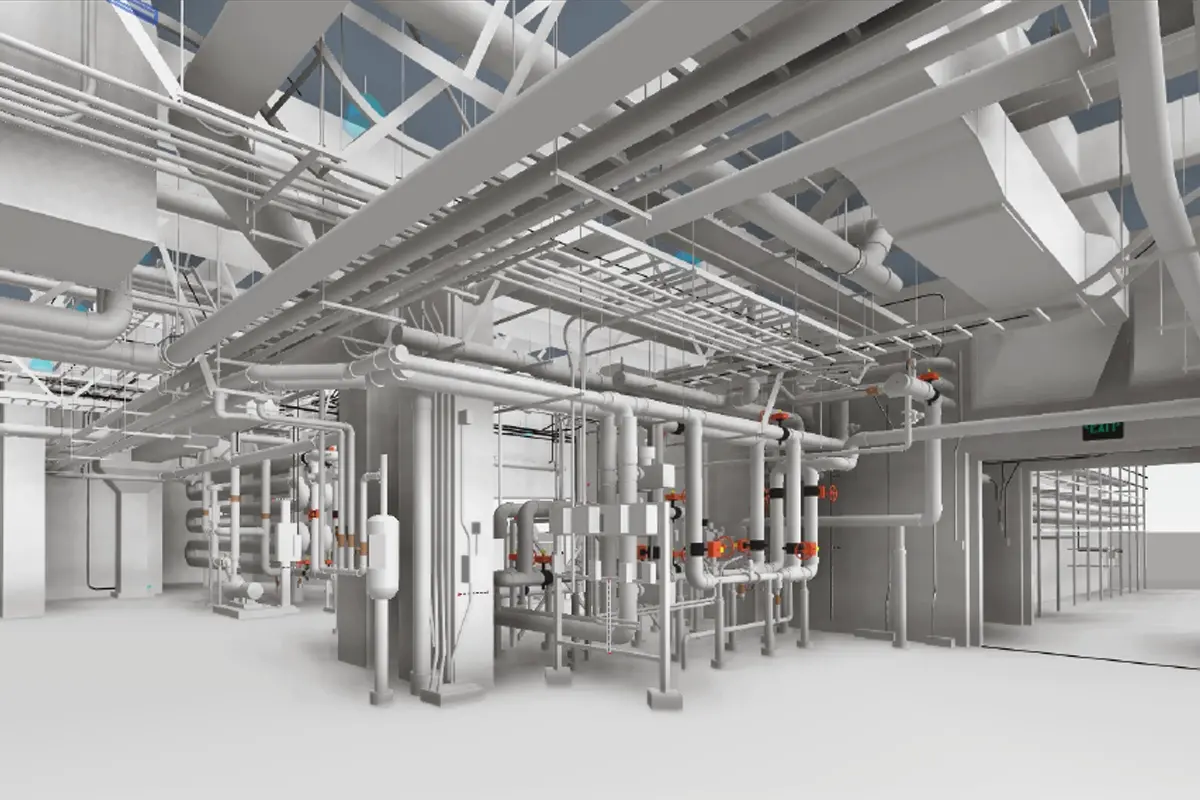Renowned Standing
Due to the skills we uphold, both large and small roll-out firms want to benefit from our knowledge and expertise.
Comprehensive mechanical HVAC design checks for optimal system performance and efficiency.
At Gsource, we provide precise Mechanical HVAC Drawing and Design services to ensure the efficient design of heaters, ducts, vents, and air conditioning systems within structures. We create detailed 3D models that give builders, engineers, and architects a clear view of system functionality and layout.
We identify potential challenges, enhance cost efficiency, and ensure on-time project delivery. Our designs adhere to industry standards such as ASHRAE, SMACNA, NFPA, and IEEE, ensuring that every project meets safety and performance benchmarks.


Creating Mechanical HVAC Design in architecture and engineering can be a task. By outsourcing these services you can-
At Gsource, our team of experts helps you with all types of ductwork drawings, mechanical layout designs, HVAC duct layout drawings, chilled beams, water schematic designs, duct fitting modeling, humidifiers, dehumidifiers & other designs and drawings for your mechanical HVAC systems.
Residential, commercial & industrial properties.
Infrastructure projects such as roads, bridges & buildings.
Wetland delineation, floodplain mapping & conservation projects.
Power lines, pipelines & water supply networks.
Municipal planning, public works & transportation departments.
Your Project is Ready in 5 Easy Steps
Due to the skills we uphold, both large and small roll-out firms want to benefit from our knowledge and expertise.
We use high-tech solutions to understand the design and construction requirements for the Mechanical HVAC systems.
We have an R&D team that can handle the vast data collection, which can feel like a task for other companies.
Timely actions and efficient outputs minimize delays, maximize productivity & ensure prompt mechanical HVAC design and BIM Modeling service for our clients.
The data we use to create topographic maps, volume calculations, and distance measurements provide results to the point.
The experience that our team holds is what sets us apart. With the training programs, our team of 300 members can deliver top-tier results laid over a 30,000-square-foot Class A Office space.
We are active members of American Society of Heating, Refrigerating and Air-Conditioning Engineers and other national and international MEP, Architectural and HVAC organizations.
As a service provider, we’ve supported and served companies across the US. Our dedication produces excellent quality that propels industry success.
We develop designs for best energy efficiency and cost savings by matching system performance under various conditions using different modeling tools like AutoCAD.
Yes, we customize our Mechanical HVAC designs to fit particular needs of every building, guaranteeing high comfort and performance.
Depending on project's size and complexity, different timelines apply. We evaluate your specific requirements before providing an estimated date.
Yes, we can examine and rework current systems to increase their effectiveness and level of performance.
Yes, we guarantee safety and legality by adhering to local authorities’ norms and laws in our projects.
We support both. Whether it’s a new construction project or a renovation requiring BIM integration, we deliver accurate HVAC models tailored to your needs.
Depending on the project size, we deliver HVAC designs within a few days to a few weeks. For urgent projects, we also provide fast-track service options.
Yes, our team has the capacity to handle single-building projects as well as large-scale, multi-site developments with consistent quality and accuracy.
(Enter captcha image text in box)
At Gsource Technologies, we’re ready to help! Tell us what you need, and we’ll connect you with the right experts.
Free Initial Consultation - No Commitment Required
Secure and Confidential Project Information
16+ Years of AEC Expertise
300+ Drawing Deliverables Daily
Industry Standards Compliance Guaranteed